How geography shaped Middle Eastern history
Why the region birthed civilization and then some reasons why it stagnated.
A major focus of my book series and this Substack column is the geographical foundations of modern progress. In particular, I am interested in geographical factors that enable complex societies to evolve.
By complex societies, I mean:
Agrarian societies (who acquired their food calories from plow-based agriculture)
Commercial societies (who invented progress)
Industrial societies (which most of us live in today)
In this article, I will explain how geography constrained the material progress of the Middle East and North Africa. The region is particularly important because it was the location of one of the most profound transitions in human history: the invention of Agriculture. This invention marked the transition from virtually every human society being Hunter Gatherers to some of them becoming Horticultural societies. With the application of animal driven plows, some of those Horticultural societies transformed into Agrarian societies.
This entirely new way of living started in the Hilly Flanks (the foothills of the Zagros and Taurus mountain ranges) sometime around 9600 BCE and then spread to the Fertile Crescent. Agrarian societies baed on irrigation evolved in the river basins of the region.
In the millenia that followed Horticultural technologies and practices spread to Europe, South Asia, and North Africa.
Much of this post is an excerpt from my book From Poverty to Progress: Understanding Humanity’s Greatest Achievement. You can order my e-books and audiobooks at a discounted price at my website, or you can purchase full-price ebooks, audiobooks, paperback, or hardcovers on Amazon.
Other books in my “From Poverty to Progress” book series:
Other articles about how geography has influenced economic development by region:
Why are there such huge variations in income across the globe?
How geography constrained progress (intro to this series)
Middle East and North Africa (this article)
Biomes
A biome is a category for a geographical area based on its dominant vegetation. The dominant vegetation in any area sets very broad constraints on what type of plants and animals can evolve there. The dominant vegetation sustains the local herbivores, which then sustain the local carnivores. Since humans use a portion of these plants and animals as base materials for food production, biomes play a critical role in constraining the types of human societies that can develop within them.
Plow-based agriculture, a necessary transition step to modern progress, is only possible at a distance from river basins in a few biomes:
Temperate Forest biomes
Mediterranean biomes
(after the invention of the steel plow in 1830s) Temperate Grassland biomes
The Middle East as I am defining it includes Turkey, Egypt, and North Africa, but excludes the bulk of Iran (which I will cover in the article on Central Asia. The region is separated into two distinct sub-regions, the Desert biomes of Arabia and the Sahara with a jumble of Temperate Forest, Mediterranean, and Temperate Grassland biomes to the north. The latter region became the homeland of the most important food production complex in history. We can see right away that most regions within the Middle East and Africa are not suitable for productive agriculture.
It is also important to remember that as global climate changes, so do the exact borders of biomes. In the Fertile Crescent, forests and woodlands were far more widespread than they are today. The forests created more fertile soils and wood for construction and heating.
Soil Type
Even with the proper biomes, a region needs fertile soil for agriculture. Because agriculture is key to feeding dense human populations, the type of soil in a region is critical to its ability to support complex societies. Soil is the combination of:
weathered rock,
air,
water, and
organic matter from decomposing plants and animals.
Soil also bifurcates the Middle East/North Africa region: the Desert areas have very unproductive soil for agricultural purposes, while the North has large patches of Alfisol, Mollisol, Inceptisol, and Ultisols.
Rivers
So far, we are not getting off to a very good start. The vast majority of the Middle East and North Africa do not appear to have geographies that are conducive to the growth of complex societies. So why was the region the first to invent agriculture? Well, a big part of the explanation is the rivers. Not surprisingly, with the exception of relatively fertile Anatolia (modern-day Turkey) the major civilizations in the region evolved along major rivers.
Rivers offer crucial advantages to human development. They:
Offer sources of (hopefully) clean drinking water.
Make it easier to remove human waste.
Offer sources of irrigation for crops.
Deposit additional nutrients in the soil for growing crops.
Enable cost-effective transportation of people and freight.
Offer defensible lines to block the approach of enemy armies.
The Middle East possessed three large navigable rivers: the Tigris, Euphrates, and Nile river valleys. The Tigrus-Euphrates and the Nile rivers gave birth to two of the oldest civilizations in human history: Mesopotamia and Ancient Egypt. The ability of these rivers to provide water for irrigation and deposit nutrients was absolutely foundational to these two civilizations. These river basins provided the habitat for the Agrarian empires that would dominate the region for thousands of years.
The Middle East also possessed long coastlines with many natural ports on the Mediterranean, Black Sea, Red Sea, and the Persian Gulf. This made it relatively easy for the technologies, skills, and social organizations that evolved in the region to diffuse into neighboring regions.
Altitude
Except for Highlands in Tropical latitudes, complex societies are concentrated on the plains at altitudes of 500 meters or lower. While landmass on Earth varies in altitude from just below sea level to 10,000 meters above, about 73.7 percent of humanity inhabits altitudes of less than 500 meters above sea level.
With the exception of Anatolia and the Atlas mountains in Northwest Africa, the entire region is below 500 meters in altitude. The altitude profile of the region is almost the opposite of biomes and soil type. The Desert regions are at a desirable altitude of 500 meters or less, with the northern Highlands being over 500 meters high.
The small “sweet spot” with lower altitudes and biomes and soil conducive to agriculture is called the Hilly Flanks, where agriculture first evolved. Because the Hilly Flanks gradually sloped up from the grassy plains to the mountains, this gave early farmers plenty of micro-environments for them to experiment with growing wild grass.
The transition likely started with Hunter-Gatherers learning that wild grasses offered enormous concentrations of calories with relatively little work. Gatherers naturally migrated to elevations that were most productive for growing wild grass and stayed there. By gathering the largest and most easily picked grains, they unintentionally selected for the characteristics that made grass most useful for humans.
Growing Season
Even if a region has a desirable biome, low altitude, and agriculturally-productive soil types, other factors can preclude the development of productive agriculture. Even in areas that have all the necessary factors, some days are too hot; some days are too cold; some days have too much rain and other days have too little rain. One or two days of any of the above are not a problem, but if those days are strung together for weeks or months, agricultural production is seriously constrained.
The Middle East has a serious problem with Growing Seasons. The vast majority of the region has nowhere near enough water to grow crops because it is… well… a Desert. The mountains on the northern edge of the region have reasonable growing seasons of 120-210 days per year, but these regions are limited in geographical area. This puts the Middle East far behind Europe, Southern China, Southeast Asia, and even India.
As you probably knew before you even started reading this article, water is a huge constraining factor in Middle Eastern agriculture, and it is highly concentrated in the three major rivers. This would dominate all of the region’s history.
Wild ancestors of domesticated animals and plants
Most of the factors that enable productive agriculture are pure geography, but biogeography also plays an important role. Productive agriculture requires domesticated animals and domesticated plants. In particular, a region needs:
Animals that are capable of pulling plows: horses, cows or water buffalo
Staple crops, such as rice, wheat, corn, or potatoes.
Before a society can domesticate a plant or animal, the wild ancestors of those plants and animals need to be either:
located in the region or
close enough that human migration can bring those animals into the region.
Now we have come to the geographical factor that made the Middle East the cradle of civilization. The region was within the natural range of the wild ancestors of:
All the big domesticated animals, including horses, cows, pigs, goats, camels and sheep.
Many staple crops, such as wheat, oat, rye, barley, millet, and beans.
No other region on planet Earth comes even close to the number and diversity of wild ancestors of plants and animals. Indeed, without the animals and plants that were domesticated in the Middle East modern agriculture would be radically different. And as farmers migrated out of the region to Europe and South Asia, they brought those plants and animals with them. European progress would likely have never have happened with the importation of domesticated plants and animals from the Middle East. Nor would American progress exist.
The threat of Herding societies
As Peter Turchin has argued (summary here on my online library of book summaries), until the widespread use of firearms and cannons, the horse archers of the Eurasian steppe were the dominant military threat to Agrarian societies. Agrarian societies that were located near Temperate Grassland biomes in Eurasia with horse archers faced an existential threat. Combining rapid strategic and tactical mobility with standoff weapons in the form of the composite bow-and-arrow, the Herding societies of the steppe were dangerous enemies.
A key vulnerability of Middle Eastern societies was a vulnerability to conquest by Herding societies. Particularly in the Tigrus-Euphrates region, agricultural societies were repeatedly attacked, devastated, and often conquered for long periods of time by Herders. The list includes Iranians, Mongols, Turks and Arabs. One might also add non-Herding societies such as the Macedonians, French and British.
Indeed, one can make the case that the most advanced societies in the Middle East spent most of their time under foreign domination. This is the opposite of most other agricultural regions. Only the relatively isolated Nile river valley was spared frequent foreign conquest.
So why has the region stagnated?
Of course, this then leads to the question: why was the same region that was on the cutting edge of civilizational development during the Ancient period been so stagnant since? Despite what some may say, the technological, scientific, or organizational contributions of the region over the last 1000 years have not been very impressive. Some might mark the start of relative stagnation at the:
Macedonia conquest around 330 BCE or
Arab conquest of around 622 or
Mongol devastation around 1260 or
Ottoman conquests after 1300
At the very least, since 1300, the Middle East has been falling further and further behind Europe, East Asia, and perhaps South Asia along virtually all dimensions. Even those who talk about the great contributions of Arab Muslim scholars, primarily focus on the period before 1300. And disproportionate share of these contributions were Jews, Christians, and Persians.
It is particularly noteworthy that all previous Agrarian societies, except within the Middle East, have experienced substantial economic progress within the last century: Europe industrialized, then East Asia, and now South and Southeast Asia. The Middle East is clearly wealthier than in previous centuries, but a very significant portion of this wealth was due to oil and gas that could only have been exploited with Western technology, skills, organizations, and capital. Not to mention Western (and now East Asia) demand for those energy resources.
By the way, this fact is a huge blow to the “Head Start” theory of human history. This theory holds that current and historical levels of relative prosperity were determined by the date of the origin of agriculture or the state. History matters, but the Middle East had a massive head start in both domains and have been lapped by the competition. In this article, I explain why the “Head Start” theory is only one step in the full explanation.
How did this happen?
The most honest answer that I can give is “I don’t know.” The main focus of my research is on discovering the causes of why societies can transform from poverty to self-sustaining economic growth. The Middle East never experienced material progress for the masses (my definition of “progress”), so the region is a little out of my wheelhouse.
So here I can only speculate, but I think that the answer lies among some blend of the following factors:
Fragile geographic foundations for agriculture: with the vast majority of the region being desert, agriculture was heavily dependent on irrigation and proximity to rivers or oases. Unlike other agricultural regions, there are no large tracts of fertile soil to expand into. Perhaps this is why Ancient migrants move to other regions.
Vulnerability to military conquest: the flat terrain with few natural defenses and being at the hub of the European peninsula, the Arabian peninsula, Africa, and Asia meant that those who desired to conquer new territories were inevitably driven toward the region. It meant that whatever was built would soon be destroyed by invading armies.
The legacy of Herding societies: I believe that the society type of their ancestors has a large effect on current material progress. It is hard to miss how much of an impact Herding societies have had on this region, probably more than any other region with plow-based agriculture. In particular, the people from most recent conquest by Herding societies, the Arabs, never left. The region is overwhelmingly Arab. Are there some genetic or cultural factors that come from this Herding legacy?
The Muslim religion, particularly as it is interpreted in Arab nations. I know that this will piss some people off, but Arab Muslims have not been very focused on economic and technological development. Most of the historical contributions in the region since the Arab conquest have been by Jews, Christians, and Persians. The resurgence of Wahhabism, Jihadism, and Islamism since 1980 does not bode well for future material progress in the region.
Oil and gas: obviously this is only relevant since World War II, but I think that it is clear that massive oil and gas fields are a mixed blessing. They enabled corrupt elites to get rich by using Western technology, skills, organizations, and capital to get rich, while their people stagnated. It is also important to note that Middle Eastern nations that lack oil and gas have not done very well either.
Lack of non-energy high-value-added export industries: This is another factor that is really only relevant for recent history, but since I believe that this is the most important of the Five Keys to Progress which are missing from relatively poor nations, I wanted to stress it. Compared to much of the rest of Asia, the Middle East has very few competitive export industries. I explain why that is important in this article.
Much of this post is an excerpt from my book From Poverty to Progress: Understanding Humanity’s Greatest Achievement. You can order my e-books and audiobooks at a discounted price at my website, or you can purchase full-price ebooks, audiobooks, paperback, or hardcovers on Amazon.
Other books in my “From Poverty to Progress” book series:
Other articles about how geography has influenced economic development by region:
Why are there such huge variations in income across the globe?
How geography constrained progress (intro to this series)
Middle East and North Africa (this article)
Some other great Substack columns on geography that you should subscribe to:

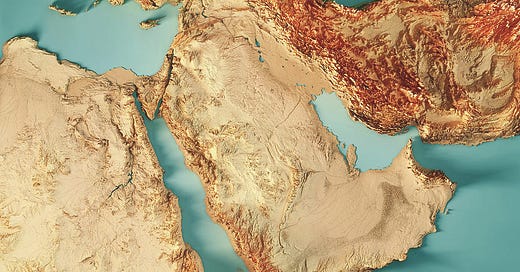



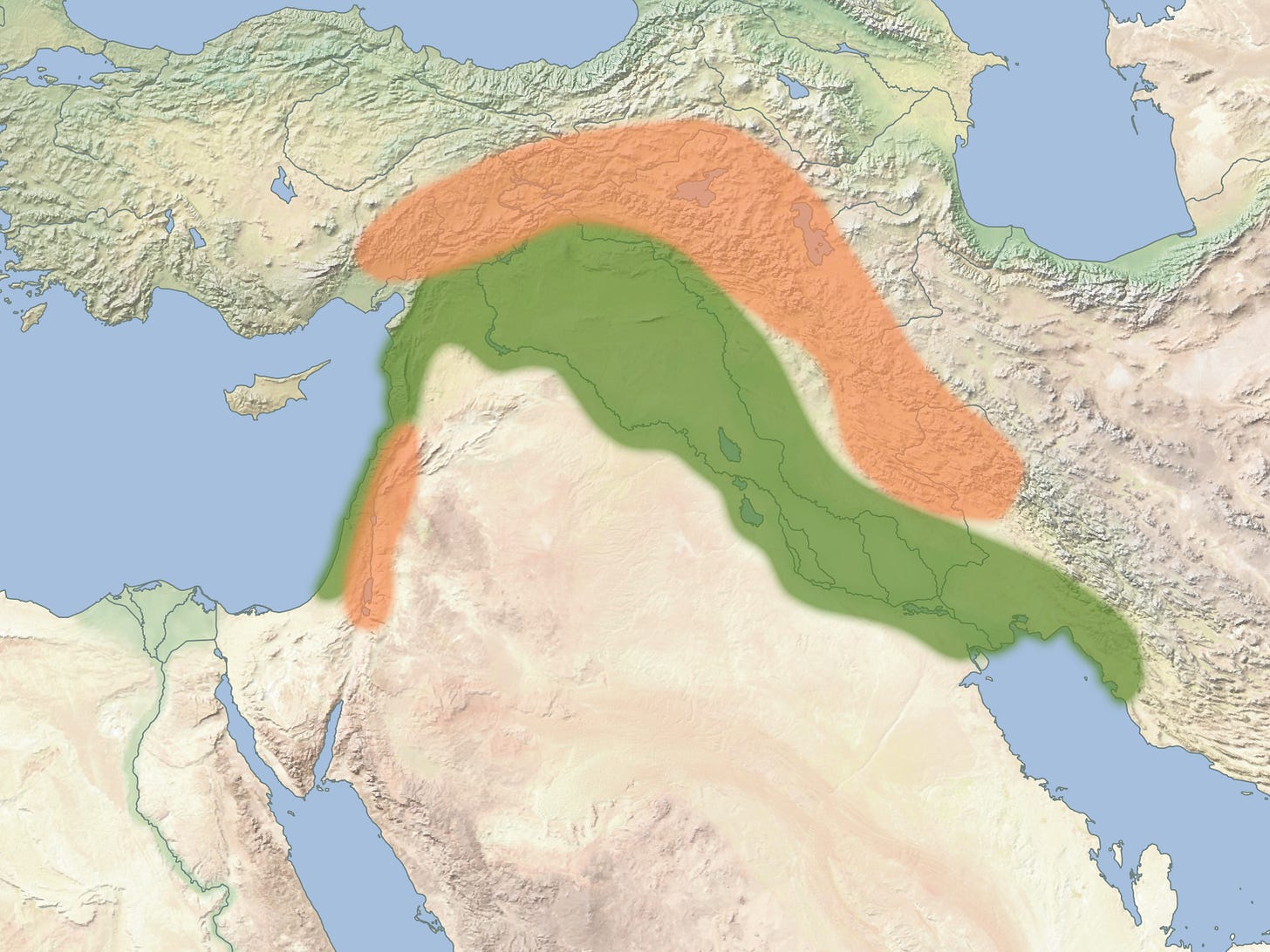
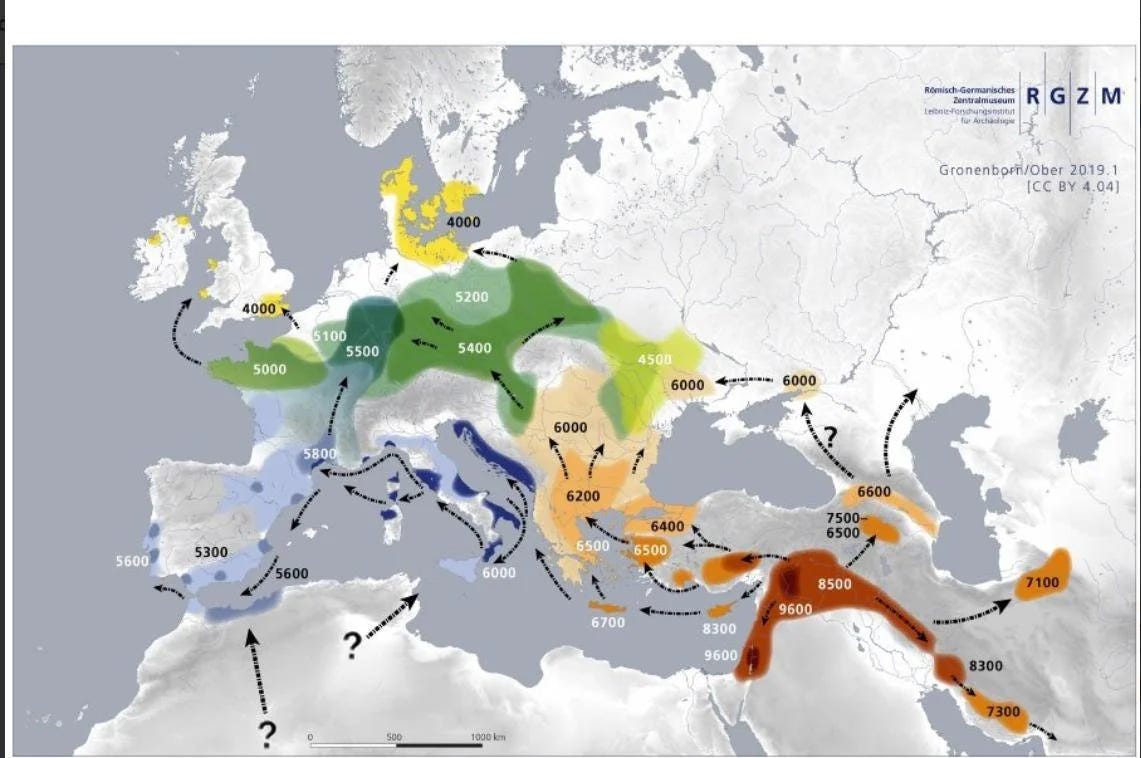



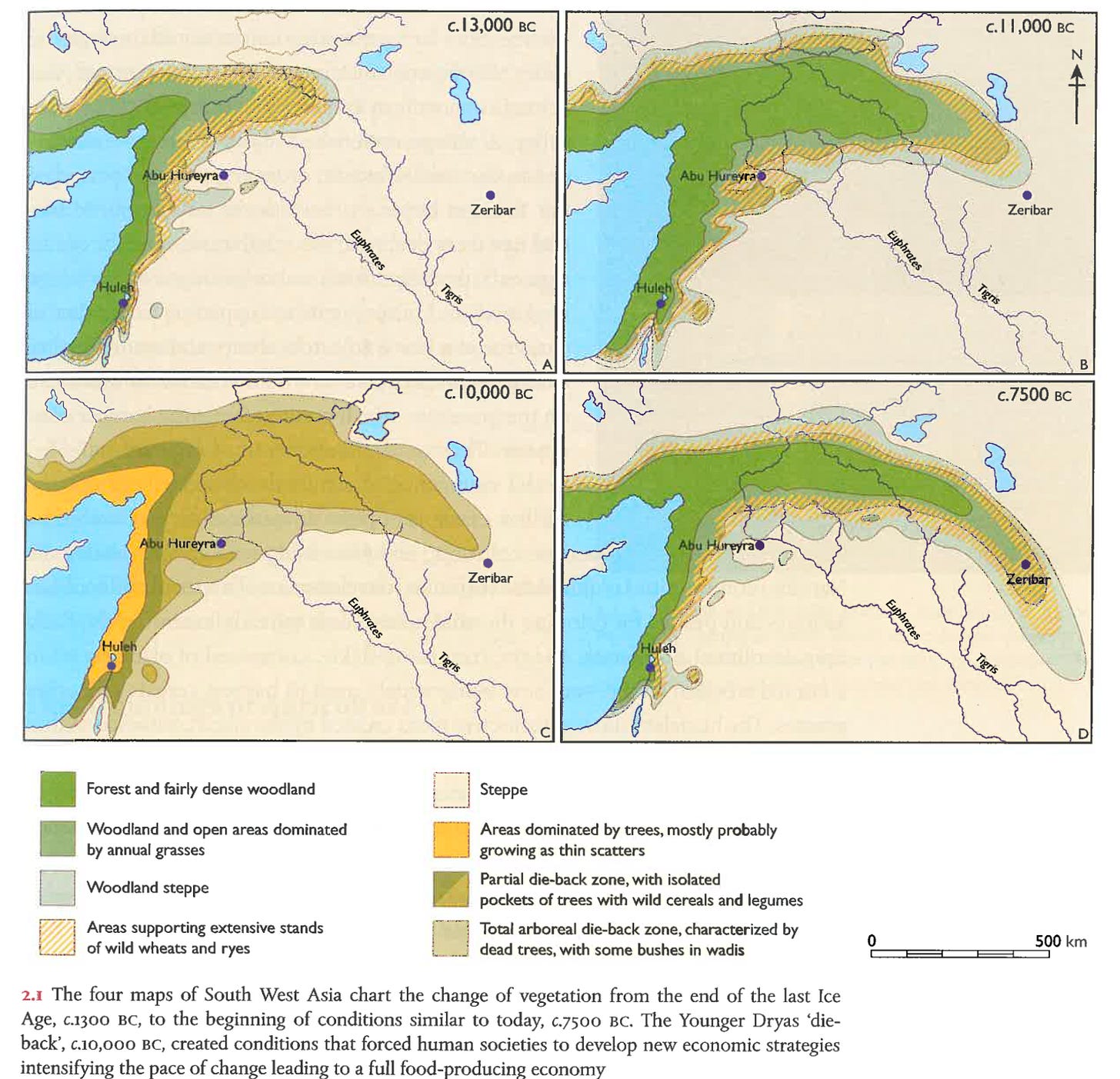






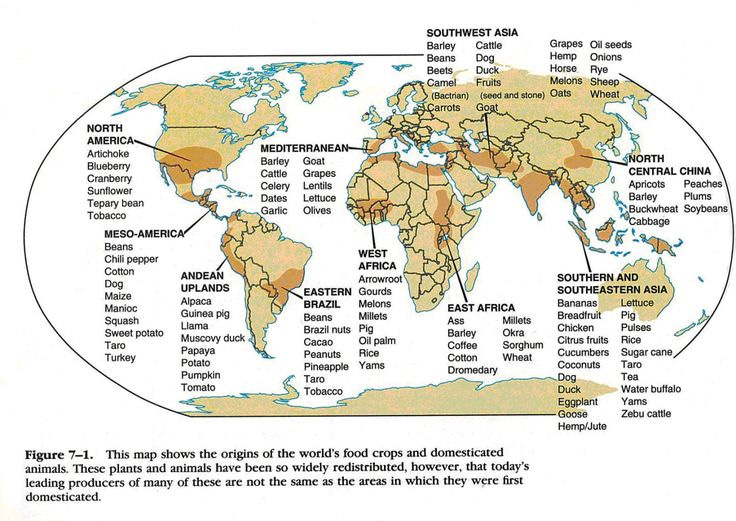


Great discussion, really enjoy these overviews.
It seems to me that a lot of what can be said about the Middle East's stagnation also applies to the Indian Subcontinent. Except there are more signs of green shoots there now, at least in parts of India proper and in Bangladesh.
I have a belief that riverine agrarian civilizations tend towards insularity and a lack of emphasis on individual initiative. All the wealth they'll ever need is produced by The River, which is controlled by the state, which means the way to get rich is to play a role in the state and gain yourself an entitlement to some of The River's bounty. Such civilizations have little to gain from conquering their neighbors, who are inevitably poorer (in an agrarian context) because those neighbors lack The River. There's not even much value in enslaving them because The River's produce supports far more souls than can productively work it, resulting in a labor surplus. That labor surplus also results in less interest in labor-saving inventions and capital improvements. The only capital improvements of interest are the irrigation works that maximize the value of The River itself and that are, again, effectively controlled by the state.
Those poorer neighbors, by contrast, have everything to gain from conquest and, at times, slavery. And a lot of this can be a matter of non-state individual initiative: raids, etc., such as those of the Vikings. They are outward-looking, obsessed with gaining an advantage over their neighbors so that they might conquer and enslave them and avoid being conquered and enslaved themselves. Those that are not obsessed in this way are outcompeted and replaced by those that are. Individual capital accumulation also plays a larger role in these societies, whether in the form of slaves or in improvements made to individually-owned farms and orchards, and in herds of livestock.
Of course, parts of the Arab world are not riverine in this sense. But it seems to me that Egypt and Mesopotamia have dominated this area demographically and culturally and that gives the whole region a riverine character. The importance of the Maghreb has also diminished relative to the ancient world, and if I'm not mistaken changes in climate played a role there.
Central Asia, Moslem nations all, did not get their first printing press until after the Russians invaded and subjugated them starting in the 1860s (I believe the first press was in Tashkent in the 1880s) -- over 400 years after Gutenberg's invention! Education consisted of rote memory of the Quran and other Islamic tomes. Their ruling classes assumed if the Prophet didn't have it in the 600s, it wasn't worth having. Today most of the Central Asian countries boast of 100% literacy, thanks to the Soviets, and Uzbekistan in particular appears to be pushing forward in social development. But blindly following religion, they dug themselves a big hole to work themselves out of.